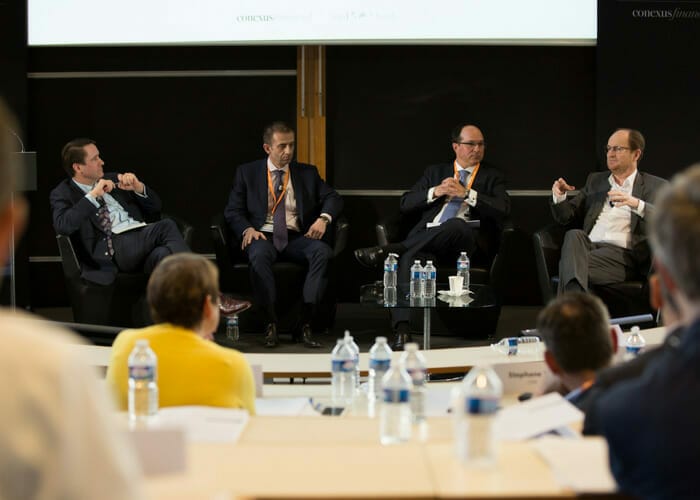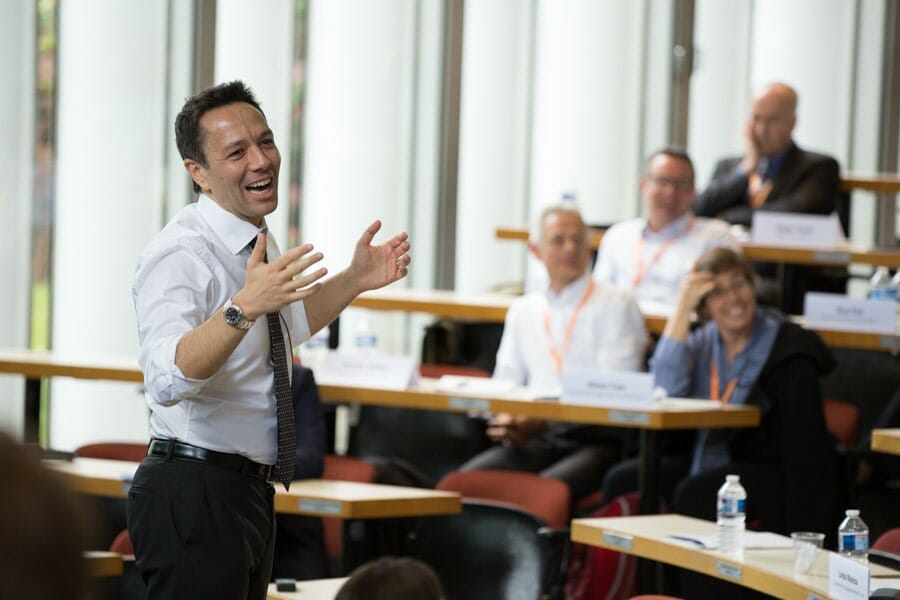Traditional asset managers are in a serious crisis of relevance, William Blair portfolio manager Ken McAtamney said during a panel discussion on digital disruption at the Fiduciary Investors Symposium at INSEAD, in France.
“Managers who are stock pickers are at risk of being disrupted,” McAtamney warned. “The move from active to passive has picked up pace, and as an industry we may have been guilty of under-delivering on performance net of fees. There is more on that but we can also focus on improving those things if we are more forward thinking on how we employ technologies in our industry.”
In his presentation, he said the asset-management industry spends about 8-9 per cent of revenue and about 14-15 per cent of total operating costs on IT. This in an industry that generates 40 per cent net operating margins.
The breakdown of IT spending shows the majority is on the back office and operations (50-70 per cent), investment process (10-30 per cent), and client engagement (10-30 per cent).
“IT spending has been focused more on reducing risks and costs than on enhancing alpha,” McAtamney said. “We think there is no replacement for judgement and decision-making, but, at the same time, we need to begrudgingly adopt technology in the front of the house. We’ve invested a lot in the back office, in trading and settlement, because we have to – that’s more defensive spending. Now can we move to using IT to [enhance] fundamental investing and decision-making?
“The focus is on how to process information and how we can come to investment conclusions more efficiently or quickly. That’s where the value add is.”
Ultimately, technology can add more science to the art of investing, but not replace art completely, the panel stated.
Speaking alongside McAtamney was Accenture head of digital strategy Bruno Berthon, who said no matter what’s happening in your market, there’s a lot of ‘digital inside’ that needs to happen.
“It seems the investment industry is investing that 70 per cent into non-discretionary [costs], to keep things running and respond to regulation,” Berthon said. “The big challenge is to find space for discretionary investing, to be innovative. I think the industry needs to be more efficient in the non-discretionary space to make way for that. What is new today will be legacy tomorrow. There is such speed at which technology is changing, you have to be present in the now.”
Keep internal technology in sync
Panellist David Long, senior vice-president and co-chief investment officer at the Healthcare of Ontario Pension Plan (HOOPP), said the biggest lesson the fund has learned in building its internal technology has been to manage the value chain of analytics, execution and workflow in sync.
“We want to make sure idea generation and the ability to execute and manage the workflow from transactions can operate at the same speed,” Long said. “What we want to do with technology is not treat each new investment challenge as a new problem and have to build everything from scratch again.
“We have a 600-person organisation and about half work on investment-related stuff, so we are trying to build platforms everyone can use and synchronise our activity across the organisation. In practice, this is difficult, because there are a lot of different users with different demands and priorities.”
HOOPP has built a number of internal platforms, including an exchange-trading app called octopus, and a repo collateral app called Flash.
Deputy dean of INSEAD Peter Zemsky, a professor of digital transformation who is also responsible for INSEAD’s digital transformation, called digital strategy a big issue for executives.
“Why now? Why is digital shooting up the CEO agenda? It’s absurdly cheap, but also the infrastructure is in place, such as the cloud, and companies that have packaged up data, storage and communication so you can scale it up. A start-up doesn’t need an IT department,” he said.
Zemsky argued that investors need to look at picking the players to take advantage of the digital revolution.
McAtamney added that managers are constantly analysing who the future winners are, but he said “we also feel like we are being disrupted as value adders”.




